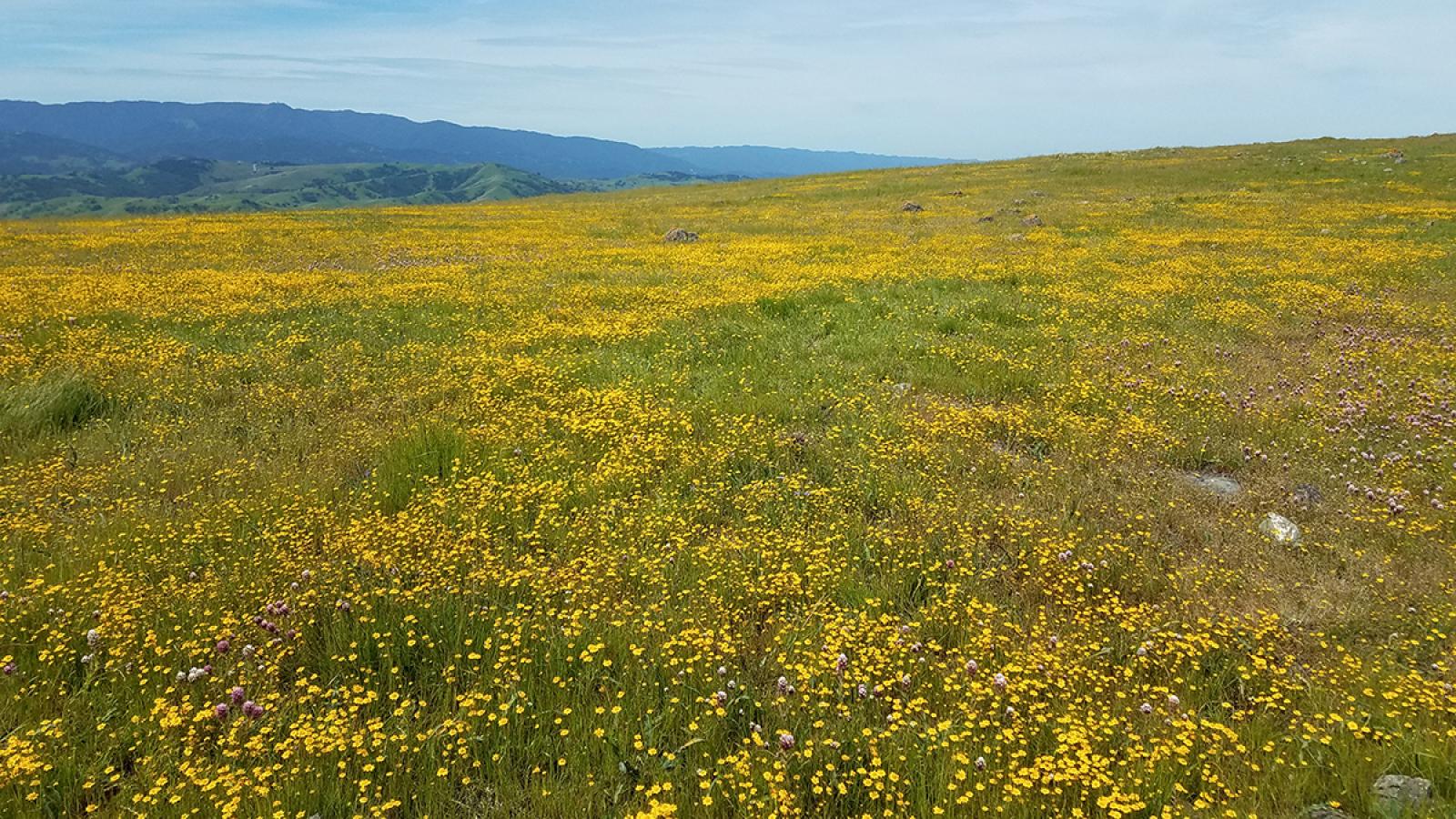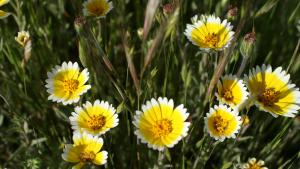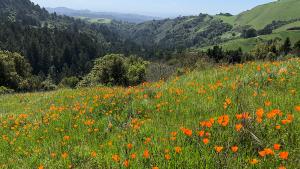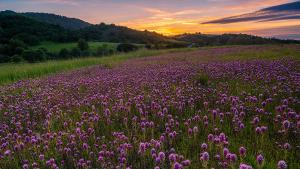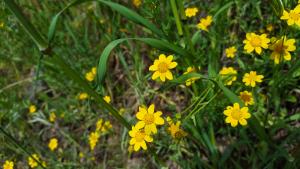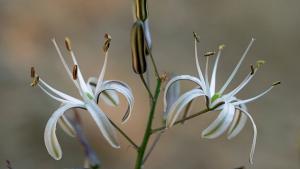Welcome to spring! By the end of the month, California poppies (Eschscholzia californica), bicolored lupines (Lupinus bicolor), blue-eyed grass (Sisyrinchium bellum), common fiddlenecks (Amsinckia intermedia) and more will add bursts of color to the Santa Cruz Mountains. This is a great time to go on an ecologically sensitive wildflower treasure hunt – take only pictures and stay on established trails.
Some of the most striking and unique wildflower displays pop up on serpentine soils. Serpentinite is California’s state rock. When serpentinite weathers, it turns into serpentine soil, which is inhospitable to most plant life because it contains high levels of some heavy metals like nickel, cobalt and chromium, and low levels of essential nutrients like nitrogen and calcium.
Although serpentine soils only make up about 1% of California’s land surface, where they do occur, “serpentine syndrome” makes a striking impact on the landscape. Serpentine plant communities usually differ drastically from nearby non-serpentine soil areas because only a few highly adapted plant species can live in such a harsh environment. In addition, nonnative and invasive plants often simply cannot survive in these soils. Serpentine habitats provide an amazing source of biodiversity because of the endemic plants and animals that they support.
Some wildflowers can only grow on serpentine, like the endemic serpentine leptosiphon (Leptosiphon amibguus). Other wildflowers, such as the purple mouse ears (Diplacus douglasii), fragrant fritillary (Fritillaria liliacea) and woodland monolopia (Monolopia gracilens) are serpentine indicators. Though they are not entirely restricted to serpentine soils, they do grow primarily in serpentine habitats.
Other native wildflower species have adapted to survive growing on or off serpentine soils. However, when they do grow on serpentine soils, they will often be slightly dwarfed, and grow smaller, more reddish leaves. Coastal tidytips (Layia platyglossa), purple sanicle (Sanicula bipinnatifida), soap plant (Chlorogalum pomeridianum), dense-flowered owl’s clover (Castilleja densiflora) and even our state flower, the California poppy (Eschscholzia californica) can be found on serpentine soils.
You can find small outcroppings of serpentine soils in many of Midpen preserves including St. Joseph’s Hill Open Space Preserve and Pulgas Ridge Open Space Preserve, and larger outcroppings in Sierra Azul Open Space Preserve.

